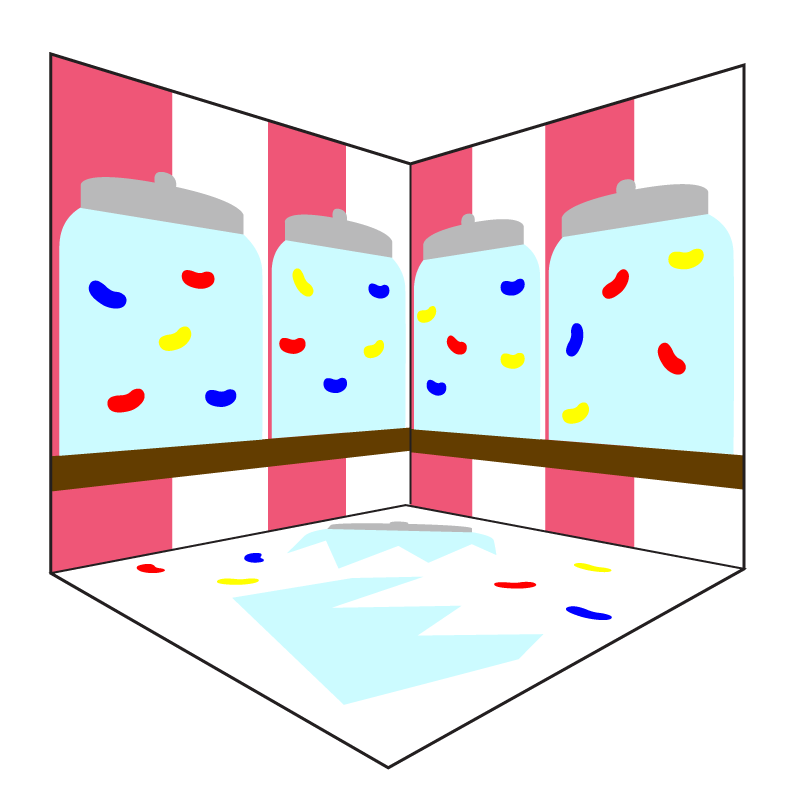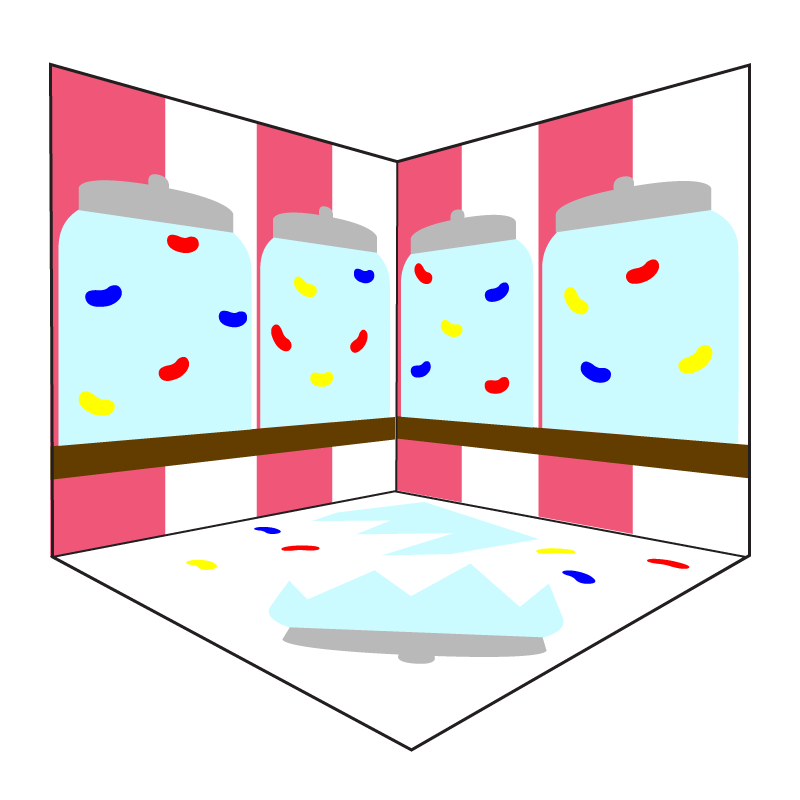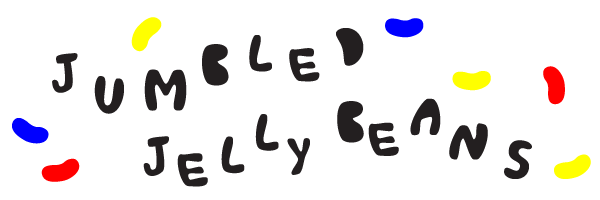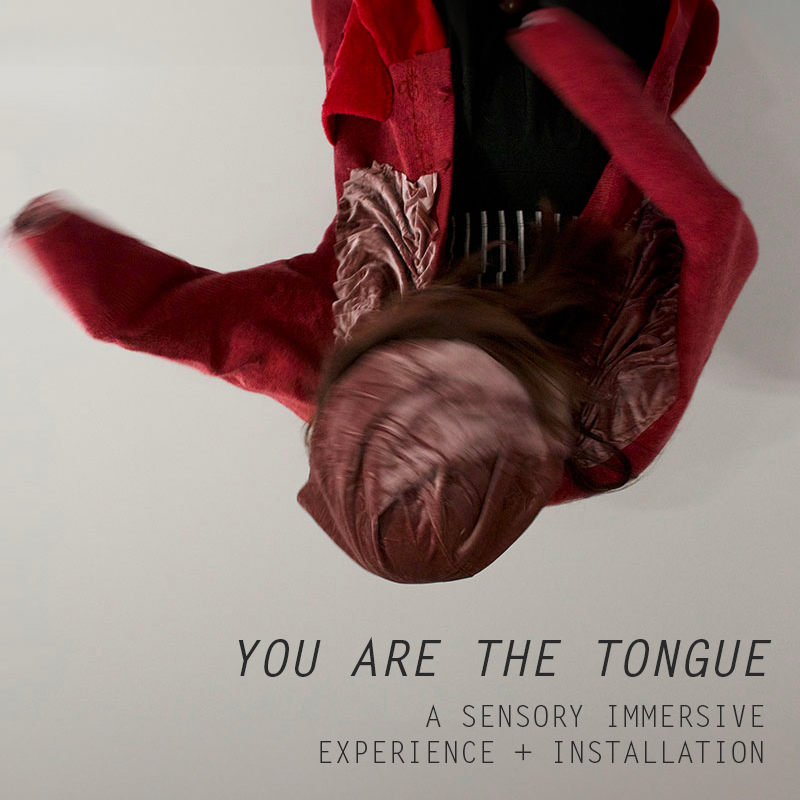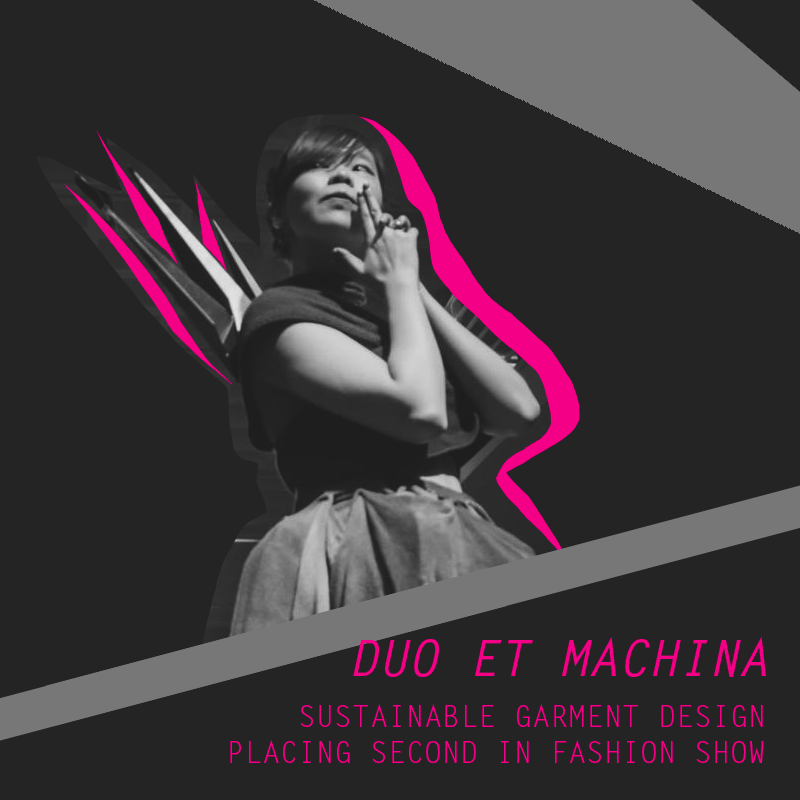bean
candy-themed escape room concept development
methods: 3D printing, molding, installation building, electronics
tags: escape rooms, theming, interactive experience
outputs: escape room concept and alpha prototype
tags: escape rooms, theming, interactive experience
outputs: escape room concept and alpha prototype
the client brief |
Escape rooms are a fun way to spend time with friends as well as a good outlet for corporate bonding, challenging abilities to coordinate mentally and physically as a team. They also encourage creative thinking, causing us to revert back to our playful selves. And what theme for an escape room can be more perfect and whimsical, then, than that of a giant candy store that participants are encouraged to explore and clamber about on?
As part of a product design class, my team brainstormed ideas for a client that specialized in escape rooms. Our final escape room idea was Jumbled Jelly Beans. |
the concept |
Jumbled Jelly Beans combined the concepts of a rock climbing wall and twister: players enter a room and are confronted with a multitude of red, yellow, and blue jelly beans on the wall. Players realize that they have to hop onto a ledge and grasp the jelly bean holds in order to avoid touching the floor. The holds they are allowed to touch for each round of the game depend on the flashing colors in the room for that round: if the color is red, they only can touch red, and if the color is orange, they have to touch a mix of red and yellow. To win the room, players have to pass all the rounds by touching holds of the right color, sometimes strategically scrambling over fellow players in order to reach the right ones.
I created the team website, found here, which contains more details about the overall gameplay and each aspect of the room. The parts I specifically worked on were the original theming of the room and the life-sized jelly bean holds. |
the background |
The concept of the room came from my original theme idea of Sugarland, which my team had picked to ideate on earlier on in the semester. Throughout the semester, we took the idea of a giant fantasy land of sugary sweets and applied it to different escape room ideas. For our looks-like and works-like prototypes, we had narrowed it down to three main idea categories: a box of chocolates, a gumball machine, and a jar of jelly beans. Deciding that the final idea had the most promise, and the most group interest, we continued to refine it into Jumbled Jelly Beans.
My idea for the theming of the room was based on the colorful nostalgia of a candy store. Players entering the room would feel like they were walking on a giant shelf in a candy store. The walls would be striped pink and white with jars that housed the protruding jelly bean holds. The ledge mimics a shelf that the jars are resting on; it would be wide enough to step on but not to stand comfortably without hugging the wall and hanging onto the holds. The floor of the room would contain a sticker consisting of a cracked jar with jelly beans spilling out, hinting to players that the floor was lava (sensor-monitored) and that they should not step on it. My original idea consisted of 13 holds of each color spread along the four walls of the room; this was later modified in the final version to holds that only spanned two of the walls. Our team of six divided into three pairs to tackle different parts of the final stage. For the final implementation of the project, I worked alongside a partner, Rima Das, to create the jelly bean holds for a corner portion of the wall. |
the molds |
Making the jelly bean holds was tricky because we wanted holds that were customizable, durable, and replicable. We settled on making molds to create the holds out of a plastic that has been used for rock wall holds before. In order to create the molds, we first 3D printed the holds that we wanted to replicate. We created the smooth look we wanted (and that the molds required) by wet sanding the holds and adding a finishing gloss coat to them.
|
We then created silicone molds from those 3D printed holds. The molds were created from Mold Star 16, which required mixing two different solutions to create a substance that would harden into a silicon mold. We cut the silicone molds in half and drilled a hole in the molds to have an opening to pour the resin in them to cast holds. In order to know how much resin to use, we filled one of the mold halves with water and then poured the water back into a cup, marking the water level.
casting |
To get the different colors of jelly beans, we mixed three different colors of resin and cast six holds of each color. We poured the resin into the molds and waited for the resin to cure before taking the holds out. After the holds were cast, we drilled two sets of holes in them - each side with a through hole for the bolt and a blind hole for resting the washers to allow for mounting on the wall. We wet sanded the holds to remove the flash and rough edges from occasional misalignment of the molds. Afterwards we oiled and dried the holds to get the shine that provides the authentic look of a jelly bean!
|
results & play testing |
The eighteen holds were then mounted onto a corner wall section for the final presentation and demo. After the demo, we let other users and the clients test out the gameplay. The client liked it, and in the overall implementation of their escape room, there was a candy-inspired room.
The team settled on the final idea after multiple rounds of brainstorming and prototype iteration. We first individually came up with multiple storyboards for our own theme ideas and picked our favorite theme. My theme, Sugarland, was picked as our theme. Afterwards, we each created a storyboard following the new theme, and made concept sketches to illustrate aspects of the storyboard. (This was the round in which my idea, Piece by Piece, came about.) We picked our three favorite storyboards to create looks-like and works-like models. Finally, from those models and feedback from users and the clients, we chose a final idea to continue to refine. More information about the process of choosing and developing the idea can be found on our team submission page. |



